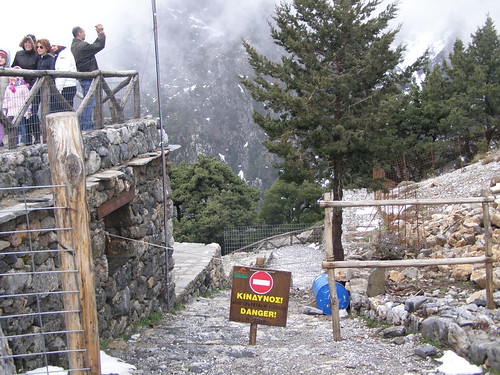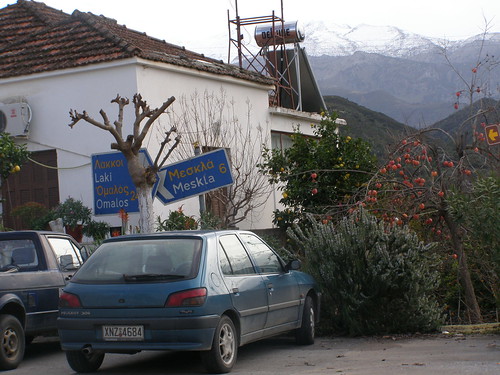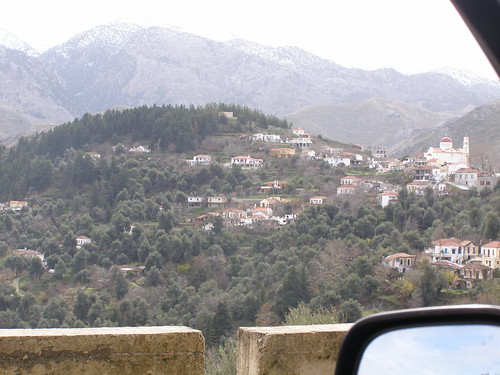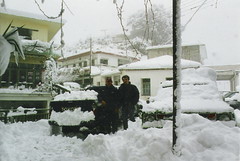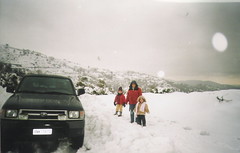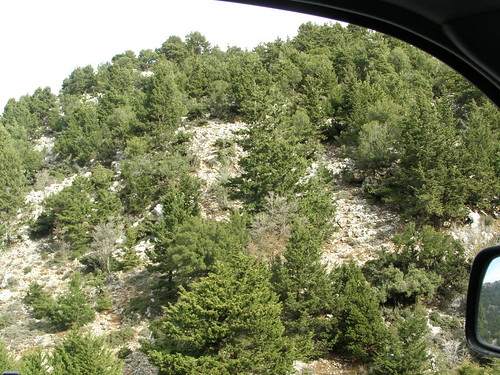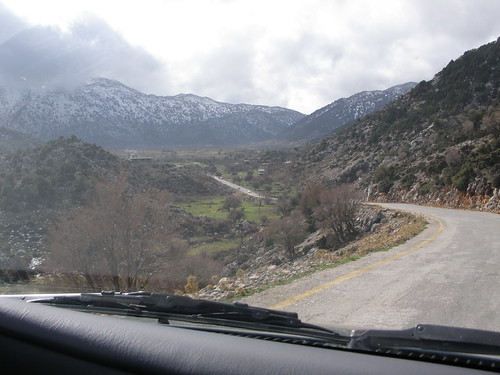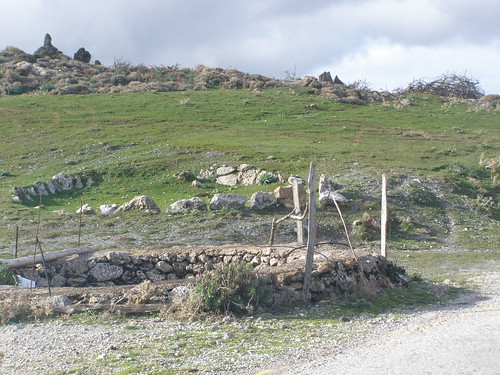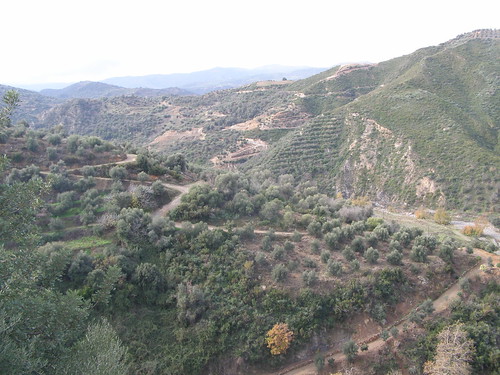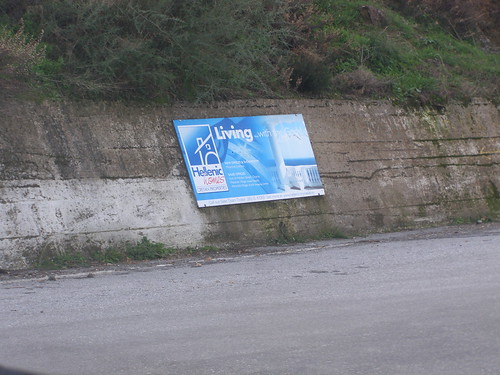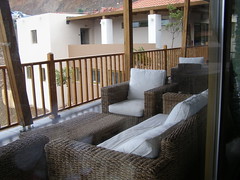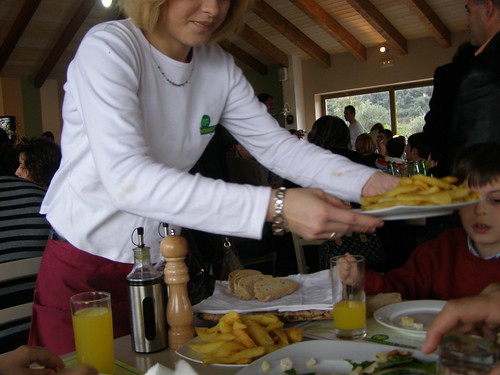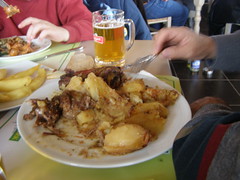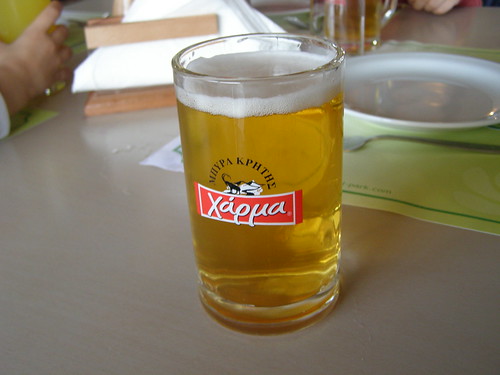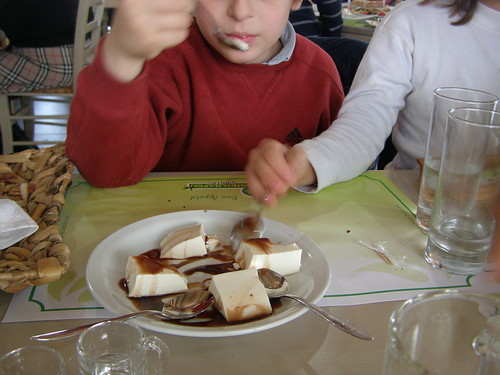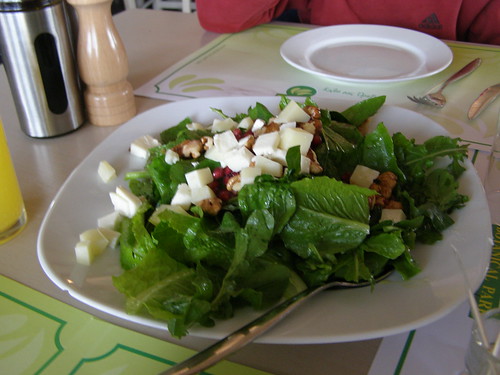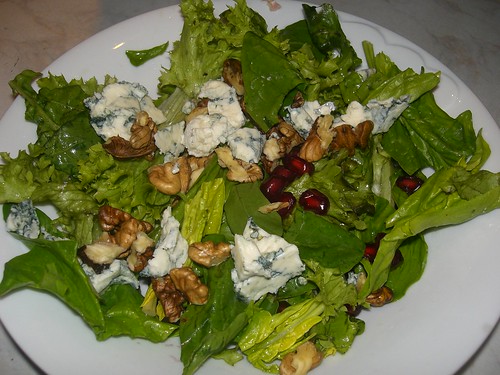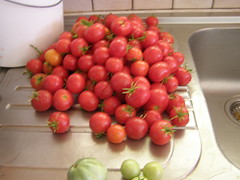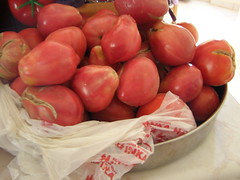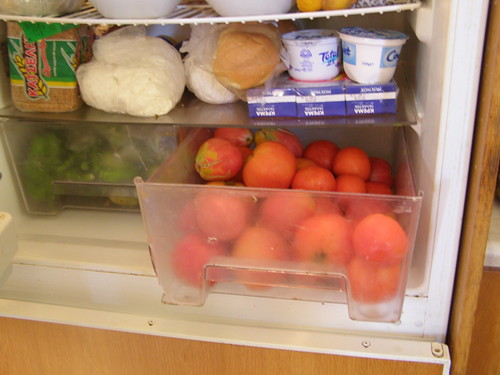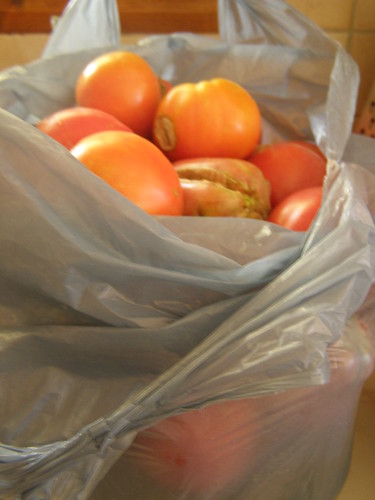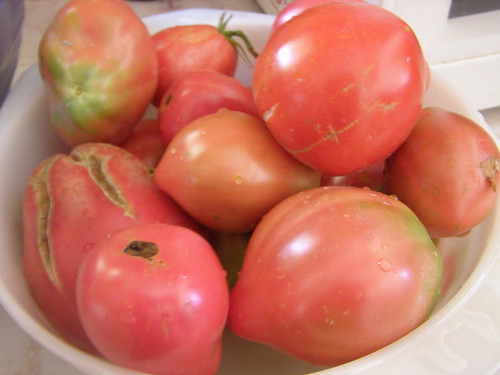And now, the news. An organised crime syndicate carrying out contract killings was recently busted in Greece. To the shame of the Cretan people, all fingers pointed to their compatriots. The outbreak of malaka that ensued could only be described in epidemic proportions on a regional scale, as it resonated across the island...
"All Cretans are liars," Epimenides of Knossos, a Cretan himself, once said (well, actually, he said "Κρῆτες ἀεὶ ψεῦσται "), creating the Epimenides paradox, a logic problem that arises in the case of a self-referential statement. Epimenides was himself a Cretan; his fellow compatriots may have thought he was a bit of a malaka because he didn't realise he was including himself in the statement. Perhaps Epimenides did realise the conunudrum, in which case he was purposely excluding himself, while assuming that all his compatriots were malakes instead.
The recent turn of events in the Greek news may actually lead one to think that Epimenides was wrong: all Cretans are not liars, they are all some kind of malaka instead. An organised crime syndicate was broken up by the police, in which the main links involved were of Cretan origin, the very fact which gave them away. The shipping magnate Pericles Panagopoulos who was kidnapped last January recalled that one of his kidnappers sounded Cretan: instead of saying 'ti', the standard modern Greek word for 'what', that feckin eejit kept using the Cretan phrase 'ida'. The whole country knows that only a Cretan would use that word, and he'd have to have been born and bred in Crete to make it come out naturally. What a malaka; it's a bit like Bugs Bunny wearing the full hijab using the phrase "What's up, Doc?" in his characteristic twang.
To make matters worse, Mr Panagopoulos' wife was told over the phone by a muffled voice that if she didn't pay the 100 million euro ransom (which was eventually bargained down to 30 million), she'd find her husband 'apothameno'. That (same) malaka didn't think to hide his tracks and just use the standard modern Greek word 'pethameno' (which means 'dead'), and usually in a well-known Cretan expletive: "διάλε τσ' αποθαμένους σου" ("may the devil take your deceased"). Instead, he used the Cretan dialectal equivalent; sounds like a case of malaka extra-large.
The biggest malaka would have to be the head of the crime syndicate, Panayiotis Vlastos, a prisoner serving a life sentence in a high security prison in Greece. Although not a Cretan himself, he inadvertently chose highly accented Cretans to help him execute the contract killings that he was organising - straight from his prison cell. The Greek public was treated to all the malakies he said during his tapped phone conversations, which he made from his mobile phone, which he was supplied with by some other Cretan malaka crony of his who was working as a prison warden.
Probably the biggest malakia Vlastos uttered was to his wife (also a member of the crime ring):
Vlastos: Do you know how many murders, how many kidnappings, how many robberies I've had to commit to give you a good life?
Wife: Mmm, I know, I know how hard you work.
Vlastos: I mean, take that car I bought you for instance, you know what it took to buy it for you, the murders, the kidnappings, the robberies...
Wife: Yes, yes, you're right.
Vlastos: Tell me babe, have you ever murdered, have you ever kidnapped, have you ever robbed? You haven't, have you?
Wife: Yes, you're right, I haven't.
Vlastos: You don't know what I go through for you.
Malaka big-time rings right through his dealings. His wife, herself some kind of malakismeni, knew all about the good life, as we know it down here in Crete.

Vlastos' wife must have had a taste for these kalitsounia made with malaka, which probably determined her locational preference.
She was infatuated by the place, as another tapped conversation attests:
Vlastos: When I get out of here, where would you like to live?
Wife: Crete, Crete, yes, Crete's the best place to live in the whole of Greece.
Vlastos: And what are you going to do there? Sunbathe all day?
Wife: Can you open up a spa for me?
Vlastos: A spa? A spa! That's it! A spa! We'll open the best spa in the area, it'll have manicure, pedicure, jacuzzi, everything. There won't be another one like it in the area. Find out which part of Crete doesn't have a spa yet...
Vlastos needed to get to Crete for this reason (to satisfy his wife's demands), so he started using his connections, and began arranging for a transfer from the high security prison in Trikala (where he was incarcerated), to the maximum security prison in Alikarnassos in Iraklio, Crete:
Wife: Good news!
Vlastos: What?
Wife: Your transfer's been arranged!
Vlastos: It has? How?
Wife: That nice one, you know, the good one...
Vlastos: Yeah? Him?
Wife: You'll be down there in a week.
Vlastos: In just one week? That was quick.
Wife: You need to thank that nice guy.
Vlastos: Yeah, we'll think of something...
The media is still trying to work out who that particularly nice malaka was: maybe it's someone in the government, maybe it's a Cretan, maybe it's both...
The chief prison officer in Iraklio wasn't quite convinced that Vlastos needed to come down to Crete to serve his sentence; what a shame he didn't stick to his guns instead of listening to another chief prison officer, this time from the low-security agricultural prison of Ayia in Hania, Crete. The head officer (now disqualified from duty until further notice) of this insignificant prison (prisoners are allowed to wander within the picket fence confines of the prison, they perform agricultural duties in the fields, and one prison day counts as two sentence days) showed 'special interest in the transfer of Vlastos to Crete', convincing the Alikarnassos head officer that Vlastos really did need to come down to Crete to serve his sentence (this latter decision heralded his own demise, suffering the same fate as his counterpart in Hania). The actions of one malaka after another created a domino effect, whose ripples were felt like a tsunami over the whole island (the whole fiasco was discovered just a few days before the transfer was to be made).
*** *** ***
Triple-A quality malaka (μαλάκα) from the Hondrakis (Χονδράκης) dairy station: 'hondromalaka' (χοντρομαλάκα) in its abbreviated form.
Just what makes a good malaka, then? A rudimentary knowledge of Greek grammar (you might like to try Babiniotis) will clarify a number of issues concerning the meaning of the word:
Ολα τα ονόματα σε -ακας δουλεύουν επί 8ώρου βάσεως:
(All nouns ending in -akas work on an 8-hour basis:)
π.χ. δασοφύλ-ακας, χωροφύλ-ακας, κτλ.
(eg forestry worker, guard, etc.)
Eξαιρείται ο μαλ-άκας ο οποίος δουλεύει επί 24ώρου βάσεως.
(An exception is 'malakas', who works on a 24-hour basis.)
Panayiotis Vlastos and his cronies are excellent examples of the 24-hour variety of malaka. Being the head of the crime syndicate indicates that Vlastos probably buys his malaka from the Archakis dairy farm, making him an 'archimalaka', while his cronies probably buy the more common variety of malaka available all over Hania, made by the Hondrakis cheese factory; that's why they're all hondromalakes.
The conversations included in this post are based on the real ones, as related to the Greek public through the television news reports. Nothing like a bit of malarkey for a laugh, is there?
©All Rights Reserved/Organically cooked. No part of this blog may be reproduced and/or copied by any means without prior consent from Maria Verivaki.



